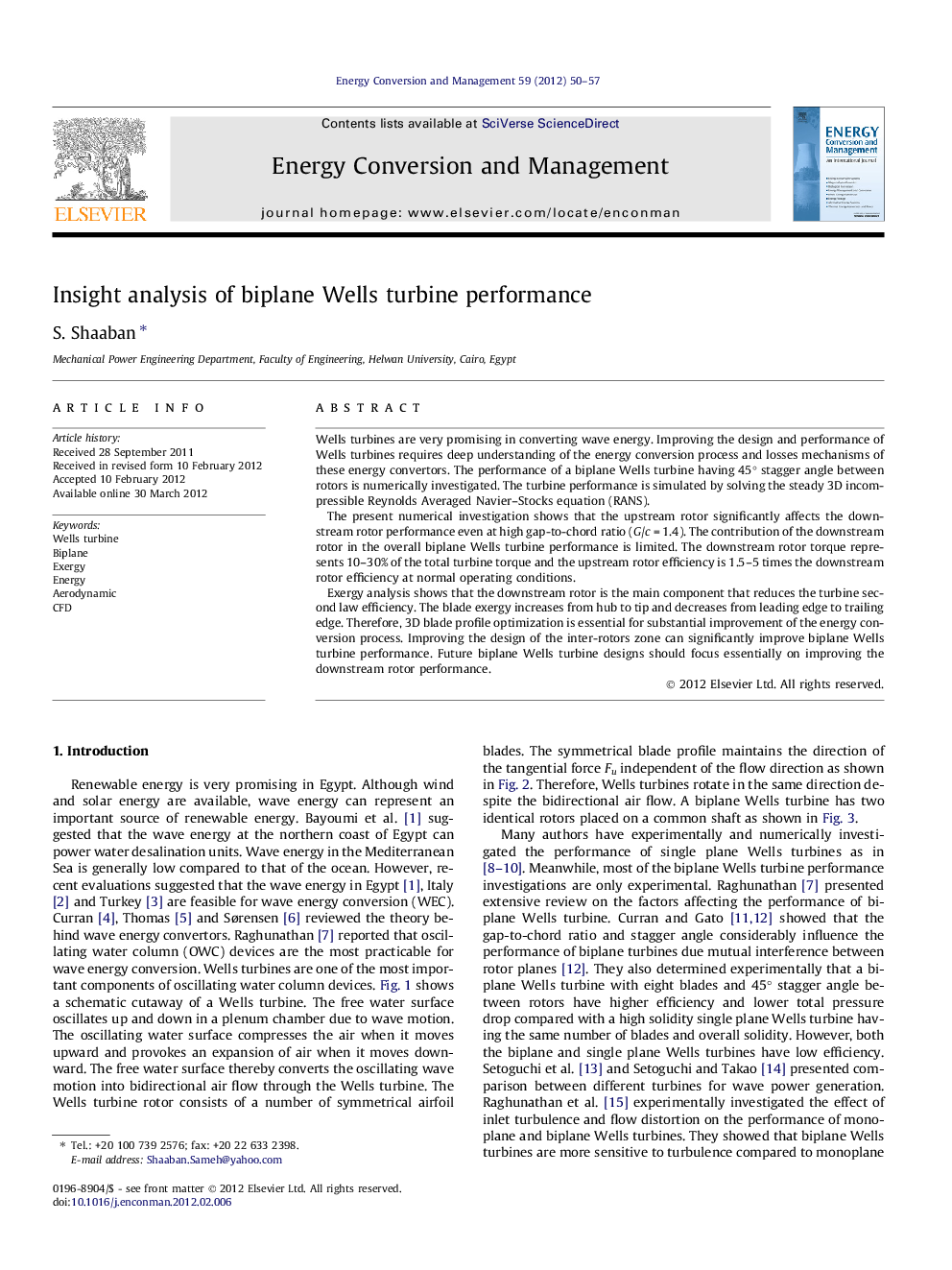| کد مقاله | کد نشریه | سال انتشار | مقاله انگلیسی | نسخه تمام متن |
|---|---|---|---|---|
| 772242 | 1462903 | 2012 | 8 صفحه PDF | دانلود رایگان |

Wells turbines are very promising in converting wave energy. Improving the design and performance of Wells turbines requires deep understanding of the energy conversion process and losses mechanisms of these energy convertors. The performance of a biplane Wells turbine having 45° stagger angle between rotors is numerically investigated. The turbine performance is simulated by solving the steady 3D incompressible Reynolds Averaged Navier–Stocks equation (RANS).The present numerical investigation shows that the upstream rotor significantly affects the downstream rotor performance even at high gap-to-chord ratio (G/c = 1.4). The contribution of the downstream rotor in the overall biplane Wells turbine performance is limited. The downstream rotor torque represents 10–30% of the total turbine torque and the upstream rotor efficiency is 1.5–5 times the downstream rotor efficiency at normal operating conditions.Exergy analysis shows that the downstream rotor is the main component that reduces the turbine second law efficiency. The blade exergy increases from hub to tip and decreases from leading edge to trailing edge. Therefore, 3D blade profile optimization is essential for substantial improvement of the energy conversion process. Improving the design of the inter-rotors zone can significantly improve biplane Wells turbine performance. Future biplane Wells turbine designs should focus essentially on improving the downstream rotor performance.
► Downstream rotor reduces overall turbine efficiency during normal operation.
► Recirculation behind downstream rotor significantly reduces the torque delivered by the turbine.
► Upstream rotor significantly affects downstream rotor performance even at high gap to chord ratios.
► Downstream rotor produces only 10–30% of the turbine power despite its feasible exergy level.
► The downstream rotor significantly delays turbine start up.
Journal: Energy Conversion and Management - Volume 59, July 2012, Pages 50–57